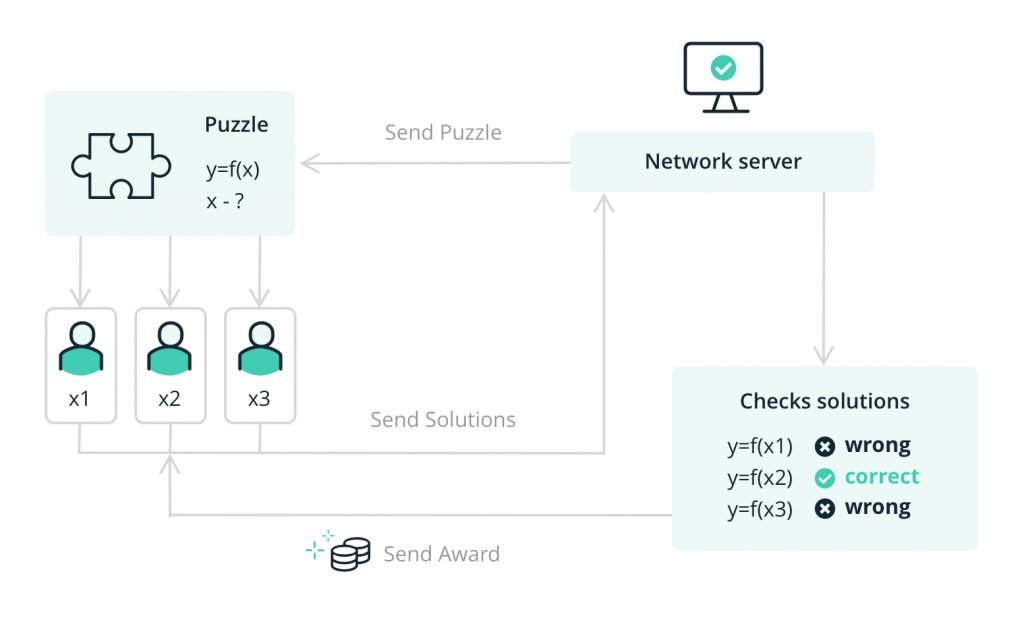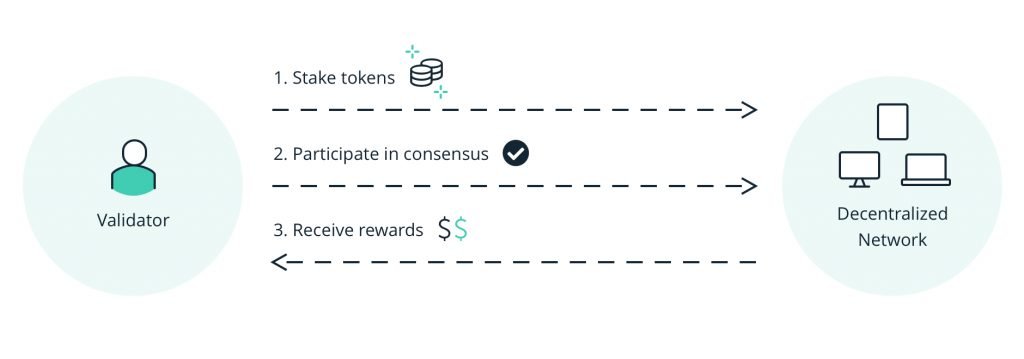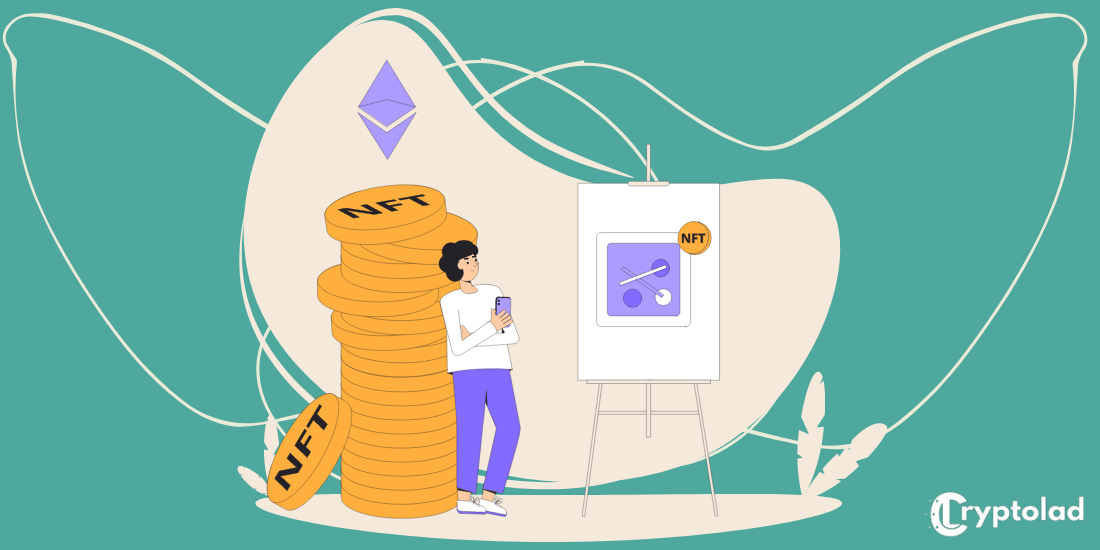Proof of Work (POW) Vs Proof of Stake (POS)
September 2, 2021

Proof of Work and Proof of Stake are commonly used terms used in the world of cryptocurrency, but what exactly do they mean?
In this article, we will be discussing the main differences between proof of stake and proof of work.
Let's get to it!
What Is Proof of Work?
Proof-of-Work (POW) is the method used by some blockchains to reach a distributed consensus.
The most widely used proof-of-work systems on cryptocurrencies are the SHA256, Scrypt, Ethash, Blake-256, CryptoNight, etc.
- The "Proof of Work" process is called cryptocurrency mining.
- Users who dedicate performances to a "Proof-of-Work" system are commonly called cryptocurrency miners
How Proof of Work Works
Originally, proof of work was a security measure to limit the risks of computer attacks and spamming on a network.
The concept of this measure was first put forward by Cynthia Dwork of Harvard, and Moni Naor of the Weizmann Institute, in 1993.
Later, the proof of work was really formalized in 1999 by Markus Jakobsson and Ari Juels.
Proof of work is now a process that is part of the consensus system at the heart of blockchains.
Since blockchains are decentralized data storage and transmission systems, their security system is based on validating each new block by the members of the network themselves: the miners.
This validation only becomes effective in the case of a consensus, obtained both by the concrete verification of the data related to the block and by the proof of work.
The proof of work is the basis of mining.
Therefore, it was designed to validate a block artificially complex and energy-consuming to make the blockchain as secure as possible.
For the miner, the proof of work consists of calculating the hash of a block awaiting validation from the block's data and a variable (called "nonce"), which can modify the hash value in a colossal number of different possibilities.
The miner must find a hash starting with a certain number of zeros.
The higher the number of zeros, the more difficult the hash will be to determine.
This is how the difficulty of the mining job is adjusted so that obtaining the proof of work always requires the same amount of time (ten minutes in the case of bitcoin), despite the increase in users' computing power.
Therefore, finding the right hash is really a contest of raw computing power with a large element of luck. The goal is to be the first miner to determine the block's hash from an astronomical amount of possibilities.
The first miner to prove work by finding the right hash is paid for validating a new block.
Therefore, proof of work is a system that requires complex and energy-consuming work, which is easily verified by a third party.
The major disadvantage of the proof-of-work system is that it is incredibly energy-intensive.
Indeed, it is not a single miner who performs the thousands of billions of computer calculations necessary to obtain the hash, but all the blockchain miners simultaneously.
As a result, the enormous energy spent by miners who ultimately fail to find the right hash is completely wasted.
However, the proof-of-work system has achieved the feat of securing decentralized public networks such as blockchains on a global scale.
What Is Proof of Stake?
A consensus-based on the escrow of a user's tokens rather than their computing power, the Proof of Stake attempts to overcome the shortcomings of its predecessor.
It was late 2016 when Irish researchers noticed, not without amazement, that the process of validating Bitcoin exchanges around the world consumed as much electricity as their entire country over the course of a year!
Therefore, this process called "proof of work", this process involving complex algorithmic calculations running 24 hours a day has been denounced for several years for its colossal consumption of energy, and what it implies to the environment.
More and more cryptocurrencies, including the famous Ethereum, are interested in a much less energy-consuming process: the Proof of Stake.
Here is a complete summary of the information that you need to understand about Proof of Stake consensus and how it works.
The Proof of Stake is a system for validating transactions carried out on a blockchain.
It was designed as a response to the Proof of Work system (the first validation system used when cryptocurrencies were created).
Proof of Work is directly related to the mining process: to control exchanges within a blockchain and thus build new blocks, some nodes in the network seek to solve a cryptographic puzzle, using the computing power of their hardware. The first to come up with the right solution (the proof of work), earn the right to create a new block, and are rewarded with a given amount of tokens.
However, this system has a number of flaws, including:
- it’s extremely energy-intensive nature, as mining is a race for raw computing power,
- the environmental problems linked to this over-consumption of energy in the process,
- the risk of centralization of cryptocurrency networks, although originally designed as decentralized.
The Proof of Stake was therefore created to overcome the shortcomings of the Proof of Work. It does not require a mining process, nor miners, but minters or "forgeurs".
The first cryptocurrency to use the Proof of Stake is Peercoin. In addition, Ethereum, one of the most widely used virtual currencies in the world, has plans to move from Proof of Work to Proof of Stake soon.
How Proof of Stake Works
The Proof of Stake is a system for validating transactions carried out on a blockchain.
It was designed to respond to the Proof of Work system (the first validation system used when cryptocurrencies were created).
Proof of Work is directly related to the mining process: to control exchanges within a blockchain and thus build new blocks, some nodes in the network seek to solve a cryptographic puzzle using the computing power of their hardware.
The first to come up with the right solution (the proof of work), earn the right to create a new block and are rewarded with a given amount of tokens.
However, this system has a number of flaws, including:
- it’s extremely energy-intensive nature, as mining is a race for raw computing power,
- the environmental problems linked to this over-consumption of energy in the process,
- the risk of centralization of cryptocurrency networks, although originally designed as decentralized.
The Proof of Stake was therefore created to overcome the shortcomings of the Proof of Work. It does not require a mining process, nor miners, but minters or "forgers".
The first cryptocurrency to use the Proof of Stake is Peercoin.
In addition, Ethereum, one of the most widely used virtual currencies globally, has plans to move from Proof of Work to Proof of Stake soon.
Features of Proof of Stake
Under Proof of Stake, a blockchain user wishing to create new blocks - and thus earn rewards - must own and "stake" a certain amount of tokens within the cryptocurrency used on the network.
This "proof of participation" varies according to the blockchains and evolves with their development.
This system is based on the idea that the more a node of a blockchain has many tokens, the more it is interested in maintaining the security of the network in which it participates.
Therefore, the more tokens a forger has, the more likely it will be selected as part of the Proof of Stake system.
Different Types of Proof of Stake
Direct Proof of Stake
The Proof of Stake protocol operation is relatively simple: a forger is selected in a random way among those with the most tokens.
To make this selection, the algorithm starts from the head of the blockchain. In other words, it is to say from the last created block.
If the forger has created the new block within the predefined time interval, he receives his reward. If not, the algorithm selects a new one to do the job.
In addition, the other blockchain nodes must check the validity of the work done by the forger.
If signs of cheating are found, the forger is reported, loses the tokens he has put into play (usually destroyed or transferred to the whistleblower), and his block is removed from the chain. This punitive process is called "slashing".
Delegated Proof of Stake
Within some blockchains - notably those of the Tron, Ark, and EOS cryptocurrencies - a forger selected according to the number of tokens he has available can designate another node in the network to forge a new block.
These blockchains generally use a fixed number of forgers, which raises the question of network centralization.
Especially since the users with the most tokens can designate each other as forgers systematically...
The Proof of Stake is thus an alternative system of validation for the blocks of a chain, conceived to palliate the inherent defects of the Proof of Work consensus.
It is less energy-consuming, less inflationary, and more decentralized. It is less secure and favours the users with the most tokens.
Wrapping Up
As you can see, there are huge differences between the proof of stake and proof of work protocols, both have their own advantages and disadvantages.
However, as Ethereum shifts to the proof of stake consensus, we will begin to see more cryptocurrencies follow along the same path.
We hope you enjoyed this article, happy trading!



